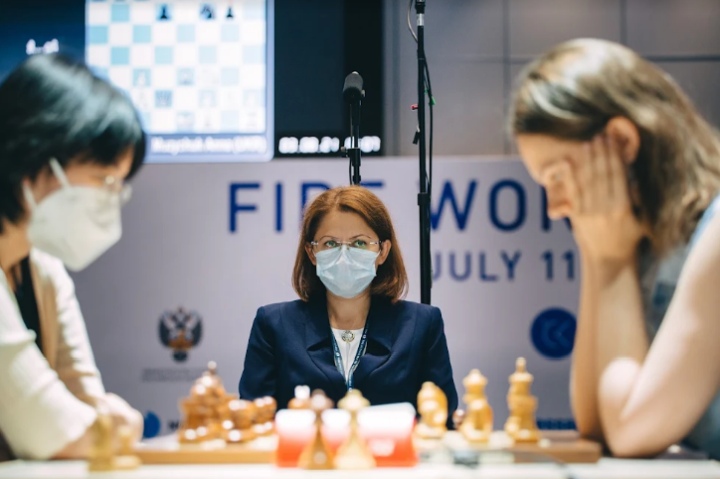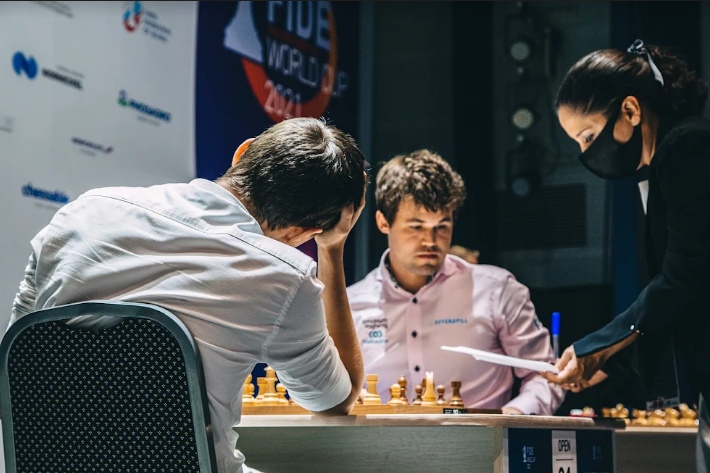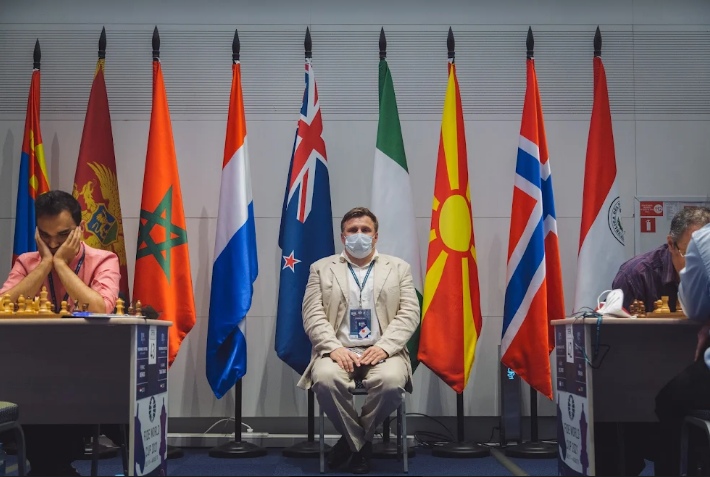Officiating in a FIDE event is a milestone in an Arbiter’s life. It takes many steps to gain experience from the very beginning of one’s career until the FIDE Arbiter (FA) and International Arbiter (IA) titles which make colleagues eligible for selection in world competitions.
No more than 20 official FIDE events are organized each year, while there are currently more than 1,500 International Arbiters and 1,800 FIDE Arbiters. Therefore, matching the number of positions in tournaments with the overall number of active arbiters is like squaring the circle. Unfortunately, whatever the selection system, it is not granted for every International Arbiter to be appointed, even once, in a world event.
Nevertheless, we believe that there are a few levers that can help increase accessibility to world events. In the past, the lack of an appointment system led to many arbiters trying their luck with different events/organizers, and they could get many nominations while other competent colleagues would still be waiting for opportunities at home. Appointing arbiters without coordination prevented the implementation of a master plan for the development of arbiters through world events.
Even worse: regulations for the eligibility of arbiters for FIDE events were published but not always enforced. In January 2020, an analysis of nominations for 2019 highlighted that 53% of positions in world events did not comply with the minimum requirements.

A recent challenge has been to start a transformation based on two core needs: ownership and quality improvement. The ultimate goal is to put in place a new model that places FIDE and the chess community’s interests at the centre of the process. Bringing back the ownership of nominations to FIDE while preserving flexibility for organizers and giving more opportunities for development for colleagues and federations. For FIDE, this is also an effective way to foster cross-commission teamwork between ARB, GSC, EVE, PDC, and WOM, following a structured plan.
A first project, focusing on the Olympiad in Moscow 2020, was launched in mid-December 2019. Subsequently, regulations were voted in 2021 to cover the selection of Arbiters in world events in general, with the first cycle of events in 2022-2023.
In September 2020, a 2-hour webinar was hosted by Laurent Freyd and Nebojsa Baralic to explain the context of world events and the selection process for Arbiters. The second part of the session analyzed as a case study the process of selection for the 2020 Olympiad. After Moscow was cancelled, the devised process was applied to Chennai 2022, with minor adjustments: some colleagues had to be replaced since they could not attend, and following the 1st FIDE Council Meeting 2022, some nominations by Continents had to be included. The final list of Arbiters for Chennai 2022 is available here.
In a nutshell, the selection of Arbiters for the Olympiad followed a few key principles:
A) Involve the community
A call of interest was used to address individuals interested to be involved. Then, federations were invited to give their feedback on their Arbiters. 526 arbiters from 136 federations answered and 101 federations shared feedback.
B) Data driven
The selection of arbiters for the past two Olympiads (Baku 2016 and Batumi 2018) was analyzed, producing statistics on the number of federations represented, the distribution by gender and continent, and the number of federations/arbiters selected once or twice.
C) Rotation and mix of experience
Selecting at least one arbiter per federation for the Olympiad is not feasible, so it was decided to encourage rotation among individuals and federations. First, an attempt was made to include the maximum of federations that weren’t represented either in 2016 or in 2018. Second, to balance experience and rotation, it was decided to select Arbiters previously involved but limit their number. A maximum of 33% of Arbiters from the last Olympiad in Batumi 2018 would be kept in the team, and only a maximum of 1/5 arbiters would be selected for the third time in a row. Overall, that means that 2/3 of the team will have a first-time opportunity to officiate at the Olympiad since 2014 – or for the first time ever.
D) Support development
World events are key to supporting development. Hence, between 15% and 20% of Foreign Match Arbiter positions were assigned to FAs, who would be paired with more experienced colleagues (mentors). These FIDE arbiters will, in turn, bring back to their countries some of the knowledge and experience earned during the Olympiad.

Following that first experience of global selection by FIDE, a procedure was designed, and regulations were voted by the FIDE Council in 2021 to extend the process to all FIDE events and become the new standard. The first cycle started this year for 2022-2023.
This is a summary of the process:
1) Call of interest
While this wasn’t a common practice before, the most effective way to trim down the number of candidates to be arbiters at an event is simply to reach out and ask them. Those who are available, willing to travel, and meet the basic conditions, can respond to this call with an expression of interest, informing ARB of their readiness to take part in the event.
As it has already been reported, the call of interest for World Events 2022-2023 was answered by almost 800 arbiters from 133 federations.
This presents the Arbiters’ Commission with a great opportunity to engage with the community. All respondents are now registered in the ARB Training Portal, which allows us to do things like conducting a survey, or collecting all kinds of input, like the languages these arbiters speak, et cetera.
2) Panels
The different Arbiters’ categories (A, B, C and D for International Arbiters and FIDE Arbiters) have always been used upwards: the categories implicitly represent a kind of recognition system of past selections. Since the creation of the system, no colleague has ever been “downgraded”, and the new FIDE Arbiters’ Commission decided not to change that.
However, this means that step by step, the number of Arbiters in the higher categories has been growing. In contrast, the total number of slots for senior roles in world events (Chief Arbiter, Deputy Chief, Sector Arbiter) remains stable.
This poses a problem that requires the introduction of an operational tool for selection: the panel of arbiters.
The system of panels is explained in the FIDE Handbook (B06.4 – FIDE Regulations for the appointments of Arbiters in World Events). There are four panels, named by colour:
- A Green Panel, containing 20 International Arbiters of category A
- A Blue Panel, comprising 35 International Arbiters of category A or B
- A Red Panel, including 50 International Arbiters of category A or B
- A Yellow Panel, including the remaining International Arbiters or FIDE Arbiters of any category
Panels are valid only for a limited period (2 years). Their primary use is to allow organizers and FIDE Commissions like GSC or EVE to pick Arbiters for tournaments. By design, this is a way to bring focus (by narrowing down the number of eligible Arbiters for each level) while allowing some flexibility. The panels also represent an enabler to reaching goals such as connection, diversity, accessibility and quality improvement.

It is important to underline a key idea: the split of concepts between a recognition tool (the titles and categories) and an operational tool for selection (the panels). Such a transformation may represent a real change; however, it is expected to bring new benefits to the community.
The panels were formed, following the published procedural rules and considering selection criteria to help make the final lists:
- Geography: each continent is represented proportionally to the actual demographics of titles/categories (A and/or B) eligible for the Green, Blue and Red panels
- 25% women: in accordance with the policy decided by the FIDE Council
- Proficiency in English
- Wishes expressed by the candidates (maximum level for appointment, geography)
- Feedback from federations
- Previous experience in tournaments as an Arbiter
A team of 7 people from the FIDE Arbiters’ Commission applied these selection criteria, using consensus as a decision tool. While the choices made can’t possibly satisfy everybody, the goal was always to work in the best interest of FIDE, sticking to the regulations, following a vision, and listening to arguments before reaching a decision.
The structure of panels gives a framework that allows for a better representation. Limiting the number of Arbiters from a single federation to allow more federations to be included in the panels and continents to be represented with better equity is a global approach in line with FIDE’s motto: “Gens una Sumus”.
Except in the Green panel (highest level), where only category A Arbiters may be selected, the other panels open a door for colleagues to progress and increase their category from B to A. Such accessibility is a prominent feature of the panels to support colleagues with the potential to develop. Limiting all upper panels to category A arbiters would stop the development of the next generations.
Panels also present an excellent opportunity to act as a catalyst for quality improvement. Under the leadership of the ARB, several workshops are planned to reflect and implement more standardized practices. Even colleagues who will not be nominated in a tournament this year are included, which is also a way to support the community to develop.
Photos: Eric Rosen and David Llada







